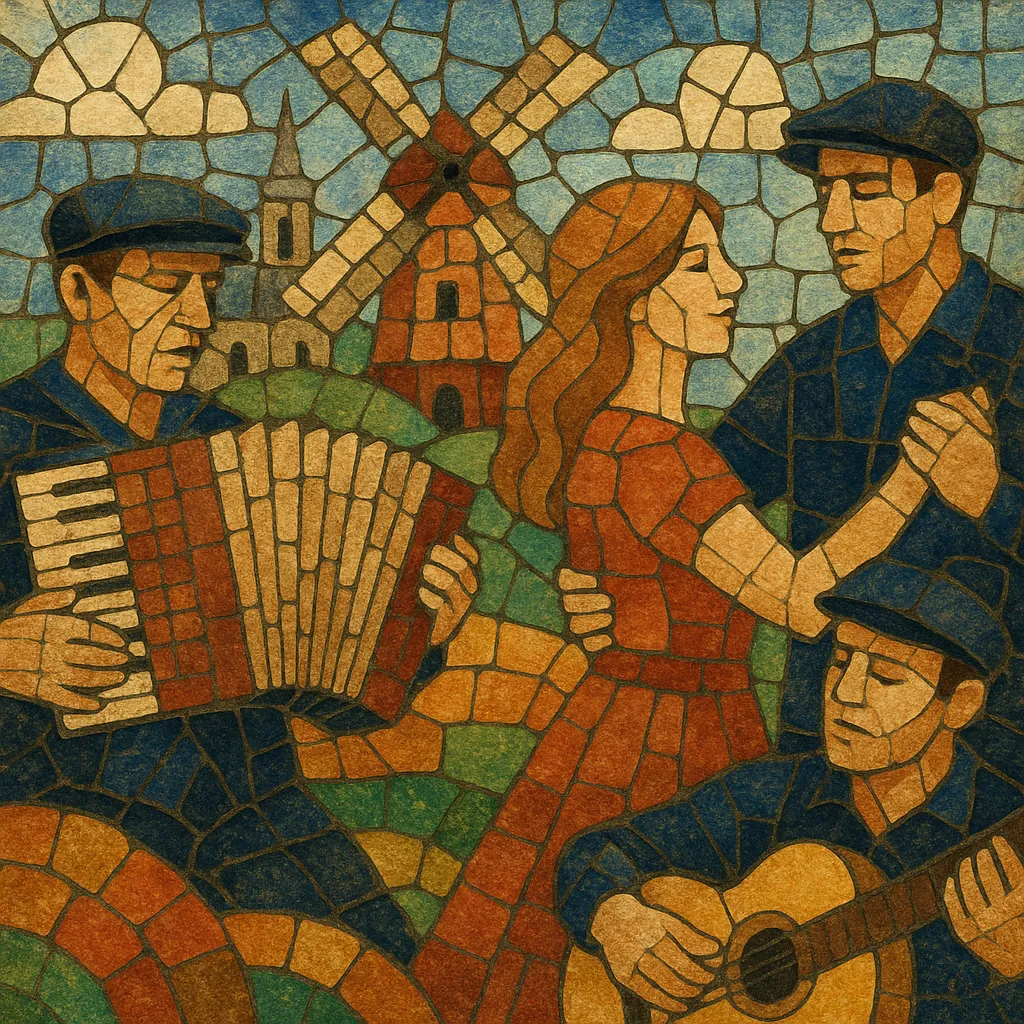Hollands (often called Hollandse muziek) is a Dutch-language popular style rooted in the levenslied tradition and Central European schlager, blending sentimental storytelling with catchy, easy-to-sing choruses.
Typical arrangements feature accordion or keyboards, light rhythm sections, and bright melodic hooks. The songs oscillate between festive, sing-along party anthems and tender, nostalgic ballads about everyday life, love, heartbreak, and working-class pride. Clear diction, emotive delivery, and straightforward verse–chorus forms make the style broadly accessible across generations in the Netherlands.
Hollands emerges from the Dutch levenslied ("life song") tradition, which had been shaped by cabaret/chanson and Germanic schlager. In the 1960s and 1970s, Dutch-language pop increasingly embraced simple, danceable rhythms and memorable refrains, laying the foundation for a recognizably "Hollandse" sound distinct from Anglo-American pop. Regional currents—Amsterdam’s smartlap and the Volendam "palingsound"—fed the movement.
By the 1980s, emotive, pub-ready ballads and upbeat sing-alongs made Hollands a staple at cafés, local festivals, and televised variety programs. Artists popularized heartfelt narratives and key-change finales, with accordion/keyboard textures becoming signature. The style sat alongside broader Nederpop, maintaining a strong working-class and family-friendly profile.
In the 2000s and 2010s, TV channels, talent shows, and dedicated radio formats amplified Hollandse hits, while production adopted shinier pop and dance elements without losing the core songwriting approach. Contemporary artists keep the genre vibrant with modern sound design, yet the themes—love, loyalty, celebration, and nostalgia—remain central.
Hollands functions as a communal soundtrack for birthdays, football celebrations, and village fairs. Its sing-along character and accessible storytelling have made it a durable fixture of Dutch popular culture, bridging generations and regions.


